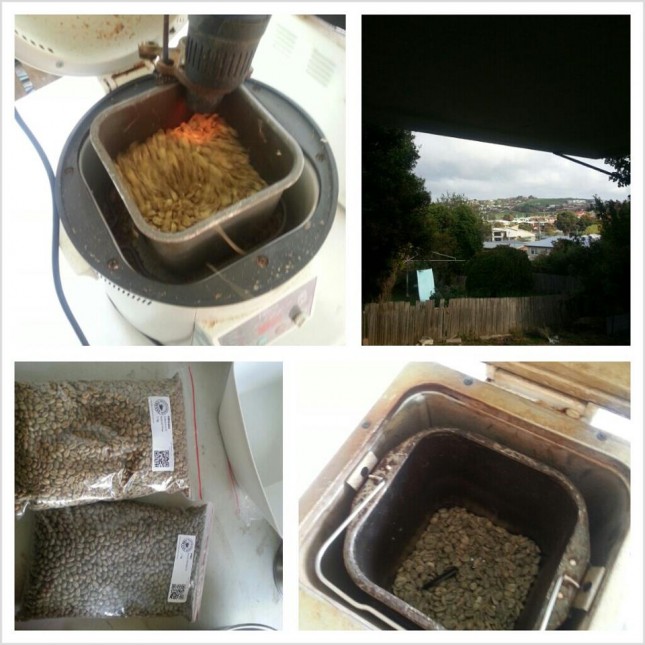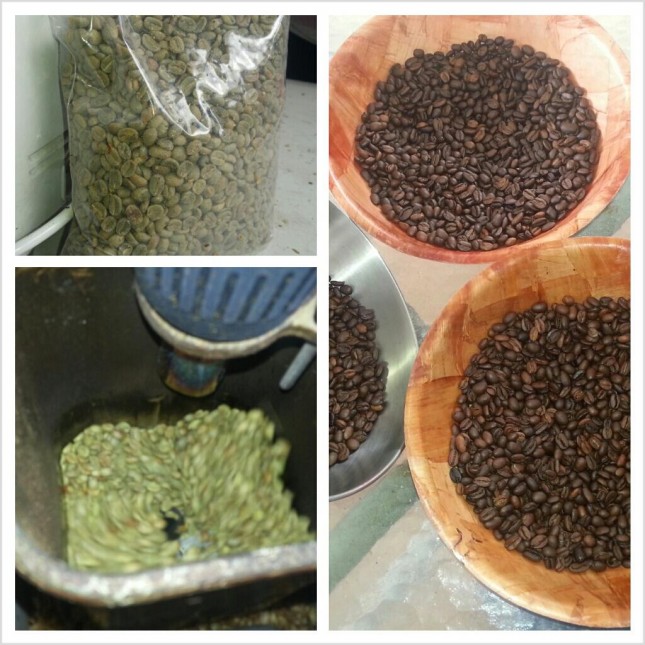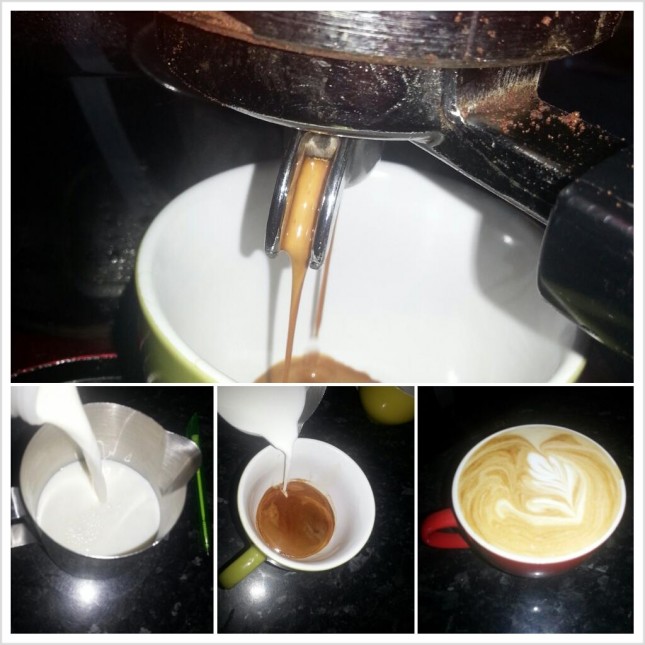By the Revd Joshua Skeat
In reality, getting into coffee roasting is a story in three parts:
To look at me now, you probably wouldn’t be able to tell, but the year before I came into ministry, I lost a stack of weight, using a very strict dieting method – one of the rules of this method was simple: only black coffee, only 3 cups a day. Many people have commented to me that three cups a day seems a lot, but as a teacher, I was drinking up to 7 cups of coffee a day at that point – 3 was a massive cut back. And going black… ugh, that took some getting used to.
When you drink coffee black, and you wish to savour the coffee that you are having, it becomes quickly apparent the difference between a good coffee and a bad coffee. And after having a “long black” at Maccas one day where the girl pulled the large mug of coffee through the group head (any body who makes coffee probably just shuddered inwardly) – I determined that I only wanted to drink good coffee. Living in Burnie, this can be difficult.
Then Jonathan Adamczewski happened. Or rather, I had coffee at his place, where his sister had sent him some specialty beans from Hawaii. These were remarkable for two reasons: firstly I was introduced to the idea of “single origin” coffee for the first time (a coffee that is not a blend of beans, rather stands alone as a single bean from a single location), and secondly I experienced flavours I had never found in coffee before. To me the overwhelming memory as I drank that coffee is that somehow it was clearly coffee, yet it tasted (in a good way, mind you) volcanic. My wife described it as “burnt pineapple”. My eyes were opened and my mind took the first steps down the pathway to wanting to experience single origin coffee: to enjoy the different varietal characteristics and flavour profiles that exist within coffee.
And then, I spent my first 12 months in ministry – and I decided I needed a hobby. Before that time, the ways that I relaxed were in front of a computer, or spending time with people. But after 12 months that seemed completely filled with computers and people I needed something different. So that Christmas, I asked of my family the various bits that I would need in order to be able to experiment and roast coffee at home.
There is a remarkable amount of information around about home roasting if you do a bit of google searching, but I quickly decided that I would skip the “popcorn maker roasting” and instead head down the path of what the Coffee Snobs community called a “Corretto” setup. The equipment that I started with, and indeed still use, is simple: A bread maker – with a decent dough setting, a heat gun – with variable heat settings, and a drill press – to hold the heat gun at different heights throughout the roast. And so the journey began…
Now roasting aficionados will probably tell you (and me) that I’m missing something there: a heat probe or temperature sensor, even a data logger, to precisely track the roasting profile of each bean, etc etc. But I don’t really do it that way. I like to roast, really unscientifically, by feel. I know approximately how long a bean should roast for, and so I keep an eye on the time. But more importantly, for me, is what the bean looks like (in terms of colour depth), smells like, and sounds like (it should have finished sounding like popcorn popping – “first crack”, and hopefully not quite be at the point of sounding like rice bubbles going into milk – “second crack”).
In a coffee roast the beans go through a number of changes and I’m sure I’ll miss some of them out here: but basically you start with a green bean and apply heat. Then it goes through a drying phase as the bean loses moisture and expands a bit – here the bean will go yellow-ish and light-brown, and often it smells quite bready. Then the bean begins to brown, lose it’s skin (chaff or silver), continuing to lose moisture until it reaches “first crack”. The sound that a bean makes at first crack will differ depending on the variety, but it mostly sounds like popcorn. I read somewhere that this is where the bean becomes exothermic and so gives off its own heat to the beans around it. Regardless, at this point you are doing things in the bean like caramelising the sugars and releasing the oils. It is the balance between these two, along with the original variety and growing region of the bean, that will ultimately determine the flavour of the coffee. The darker you roast, the less varietal characteristic you get and the more “roasting” characteristic you get. I like to preserve these varietal characteristics, so tend to “dump” the roast after first crack, but before second crack.
The roasting experience is fun, in a strange way. It is fascinating to watch and listen and smell as the different things happen. I love sharing my roasting time with friends and with my kids in particular. In the last 12 or so months I have begun to also experiment with my own roasting blends – coming up with names can be a whole lot of fun. There have been successes (like the “Blend of Doom/Awesomeness” created by my son and his best friend) and failures (like the recent one that tasted like someone had infected my coffee with a herbal supplement). But ultimately, each time I roast and each blend I make is unique.
Perhaps that is the fourth part of my journey into coffee roasting. As one who enjoys singing and even maybe the dramatic at times, I think that I probably need creative outlet in my life. And there is something very special about creating something that is unique and that you can share with anyone, almost at anytime. Home coffee roasting gives me that. And it’s delicious to boot. In fact, I think I might go and make myself one now.




